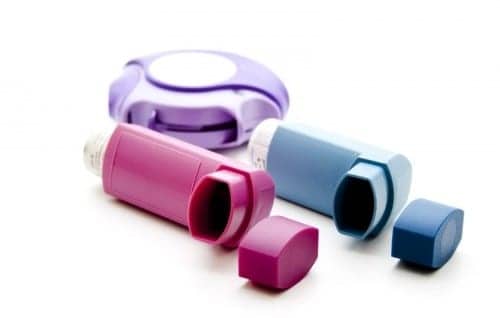Sunovion Pharmaceuticals Inc (Sunovion) today announced results of recent health outcomes research about the use of inhaler devices and associated patient outcomes among COPD patients at the Society of Hospital Medicine’s (SHM) Hospital Medicine 2016 (HM16) conference in San Diego, California. The data, shared through two poster presentations, showcase Sunovion’s commitment to advancing COPD treatment and patient care.
The findings from these real-world observational studies emphasize the need for routine assessment of COPD patients’ ability to use hand-held inhalation devices prior to treatment selection in hospital and community settings. The first study showed that low inhaler confidence and incorrect device technique may be associated with reduced patient satisfaction and poorer health status among COPD patients. A second study demonstrated that a significant proportion of COPD patients received dry powder inhaler treatments despite experiencing sub-optimal peak inspiratory flow rate.
“At Sunovion, we are committed to understanding how COPD treatments impact patient outcomes in real-world settings,” said Krithika Rajagopalan, Vice President, Head of Global Health Economics and Outcomes Research, Sunovion Pharmaceuticals. “The more we understand about the relationship between device selection and its association with patient satisfaction and health status in the complex world of COPD treatment and management, the greater difference we can make in developing medications and device-drug combinations, that can improve patients’ lives.”
This real-world observational study of COPD practice patterns, patient preference and outcomes collected data through a large nationally representative, cross-sectional survey of US physicians treating COPD and their patients. Assessments included in the analysis were drawn from physician and patient reports on the level of patient confidence with using the correct inhaler technique, COPD related health status measured by CAT (COPD Assessment Test) and patient satisfaction with their inhaler devices. At least one in three COPD patients reported low level of confidence with correct use of inhaler regardless of the type of hand-held device they used. Study results also showed that patients reporting low level of confidence with inhaler usage had significantly poorer COPD related health outcomes and treatment satisfaction as compared with patients having high level of confidence with inhaler usage. The study findings suggest that approaches to improve patient inhaler technique, or using alternative delivery mechanisms like the use of nebulizers when appropriate should be considered to ensure optimal patient satisfaction and health outcomes.
Peak inspiratory flow rate (PIFR) is a measure of a patient’s inspiratory effort to deliver medication via a dry powder inhaler (DPI) such as Diskus. A PIFR ? 60L/min with a particular DPI is considered optimal to achieve bronchodilation.1,2 In a prospective observational study at seven U.S. clinical sites, PIFR measured using the In-Check Dial device and data on treatment patterns were collected from the first 100 patients enrolled at hospital discharge following treatment for a COPD exacerbation. Interim findings indicated that one in every four COPD patients discharged from a hospital following treatment for an exacerbation achieved PIFR < 60 L/min using resistance of the Diskus device. However, 70 percent of patients with PIFR < 60 L/min in this research were receiving medications via DPIs, including Diskus at discharge. These results indicate that COPD patients in real life may have difficulty in experiencing optimal peak inspiratory flow rate using commonly used devices. Routine PIFR assessment among COPD patients before hospital discharge may help guide treatment related decisions and to consequently improve post-discharge care.










